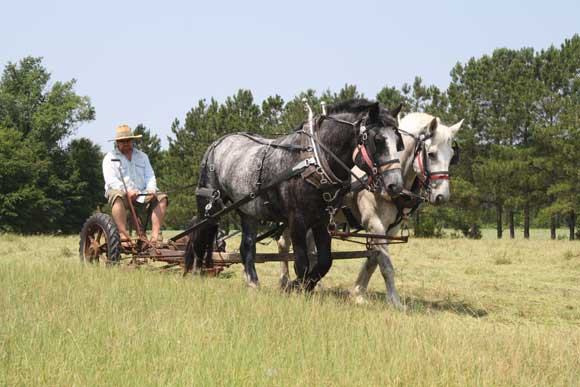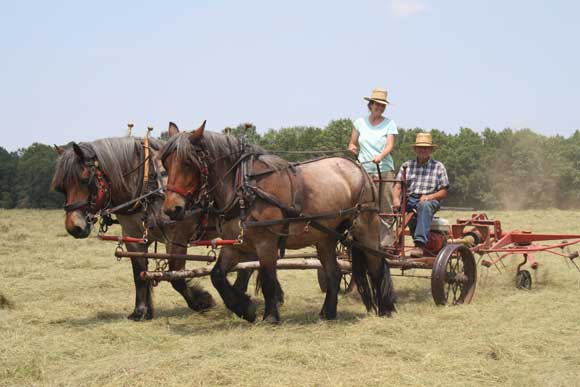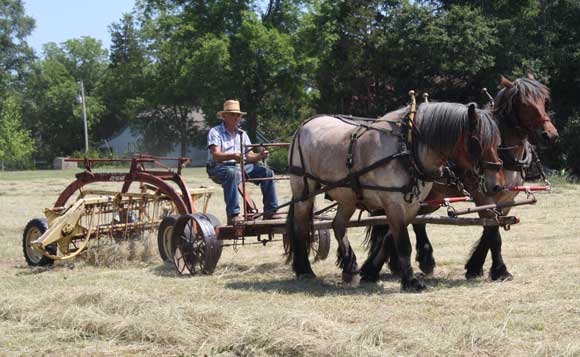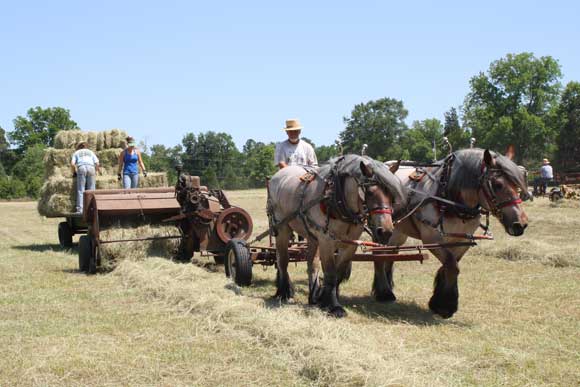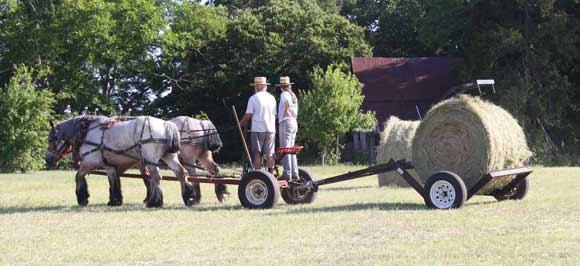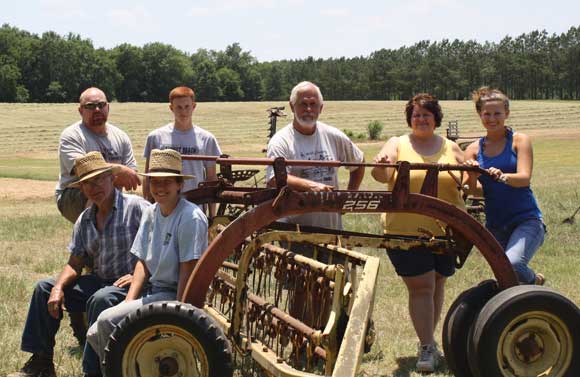Horsepowered Haymaking
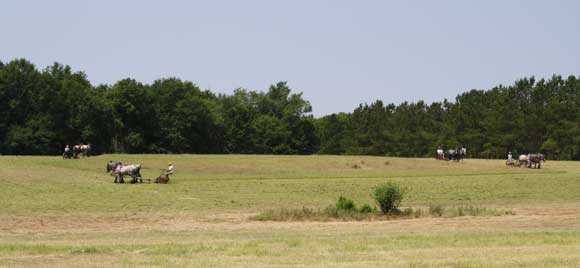
During a spell of good weather in early June this past summer, Tommy Flowers invited some of his
friends to visit and bring their horses to help put up some hay on his Blackville, S.C., farm. The
10 acres of hay was thin so the work went quickly and by the time they were done they had brought
in 390 small square bales and 3 round ones.
They used four mowers, one tedder, two rakes, three forecarts, one baler and three wagons over
a three day period. Tommy had his three Brabants and one blue roan Percheron working and was
Margaret Seidl, Todd’s nephew Elijah, and Tommy’s daughter, Hannah.
The mowers included three McCormick- Deering No. 9s and one Massey Harris No. 33. Three of
the mowers had 5-foot bars and the fourth was fitted with a 6-foot bar. As they all traveled
around the field, about more than 20- feet of hay was cut each round. The hay was tedded with
an I&J tedder with engine and was raked with a New Holland rake and one by John Deere. The
small square bales were put up with a New Holland 68, built sometime between 1956 and 1961, which
"should have been retired long ago," according to Tommy who bought it at an Ohio Amish
farm auction in 1999. The baler has a 17 horsepower engine and has pumped out 174 bales in 54
minutes "and none came apart" on some days. On other days, "it is nothing but
trouble and makes me think about loose hay," Tommy says.
Tommy moved the round bales with a round bale hauler from Tractor Supply Company rigged with a
battery and switch to lock the hauler's brakes. When you want to pick up the bale, you just
back up onto it. When you want to dump the bale you just lock the brakes , back up and it unloads.
